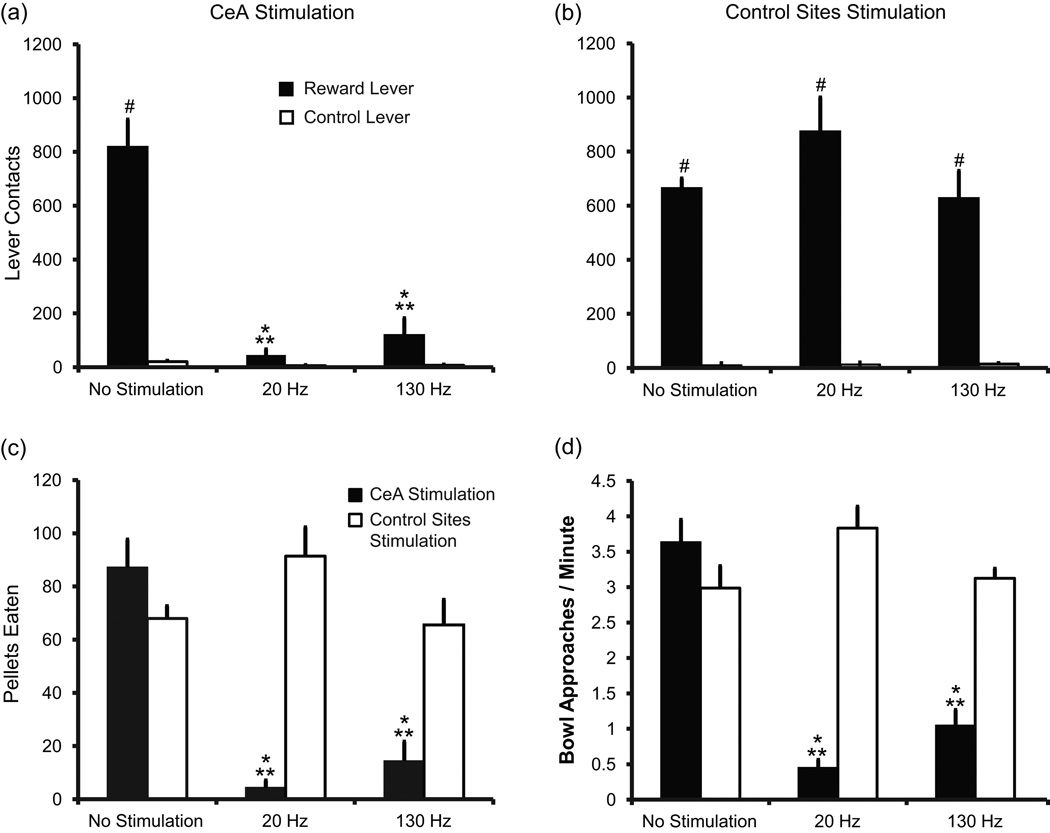Figure 3.
DBS in the CeA decreases motivation to work for and consume sucrose pellets. (a – b) Average number of reward (black bars) and control lever (unfilled bars) contacts for no stimulation, 20 Hz stimulation, and 130 Hz stimulation. (a) Rats implanted in the CeA (n = 7). Reward lever contacts were significantly reduced during stimulation compared to no stimulation,* P < 0.001 and compared to rats receiving stimulation in control (non-CeA) sites, ** P < 0.001. Reward lever contacts were significantly greater than control lever contacts, # T(1) = 77.000, P < 0.001 during no stimulation, but not for 20 Hz [T(1) = 68.000, P = 0.053] or 130 Hz [T(1) = 73.000, P = 0.007] stimulation. (b) Rats implanted in areas outside of the CeA (n = 4). There was a significant decrease in control lever contacts compared to reward lever contacts for each test condition, # T(1) = 78.000, P < 0.001, but no effect of stimulation. (c) Average number of sucrose pellets consumed in 30 minutes for rats implanted in the CeA (black bars) and control sites (unfilled bars). Stimulation decreased pellet consumption for rats implanted in the CeA (* P < 0.001) compared to no stimulation and to stimulation control sites (** P < 0.001). (d) Average rate of bowl approaches. Stimulation decreased rate of bowl approaches for rats implanted in the CeA (* P < 0.001, black bars) compared to no stimulation and to stimulation in control sites (** P < 0.001, unfilled bars). Error bars represent standard error.

